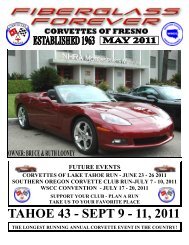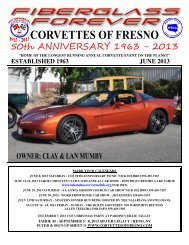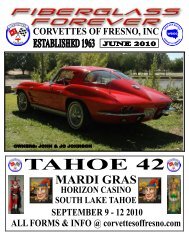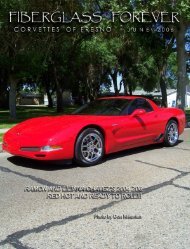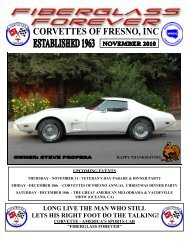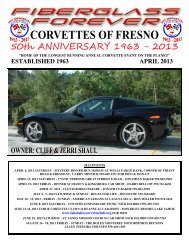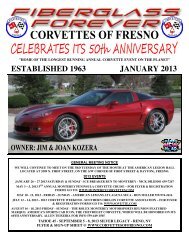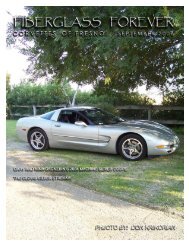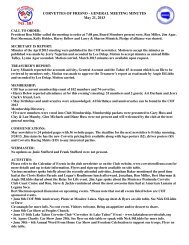Download
Download
Download
Create successful ePaper yourself
Turn your PDF publications into a flip-book with our unique Google optimized e-Paper software.
features two additional valves that open to a lower-restriction path through the mufflers. When<br />
open, these valves increase engine performance and produce a more powerful exhaust note.<br />
The LT1 is mated to either a six-speed paddle-shift automatic transmission or an industryexclusive<br />
TREMEC TR6070 seven-speed manual with Active Rev Matching. The Corvette<br />
retains its distinctive rear transaxle layout for optimal weight balance.<br />
The seven-speed manual incorporates rev-matching technology for upshifts and downshifts.<br />
This driver-selectable feature can be easily engaged or disengaged via paddles on the steering<br />
wheel. The seven-speed is used with a new dual-mass flywheel and dual-disc clutch, which<br />
deliver greater shift quality and feel through lower inertia. The transmission with the Z51<br />
Performance Package includes specific close-ratio gearing for more aggressive driving.<br />
“Active Rev Matching makes the new Corvette easier and more fun to drive in performance<br />
conditions,” said Jeuchter. “It anticipates the next gear selection and electronically ‘blips’ the<br />
throttle to match engine speed for a seamless gear change.”<br />
A six-speed Hydra-Matic 6L80 paddle-shift automatic is also available. It is optimized for use<br />
with Active Fuel Management and features a lower-inertia torque converter for improved shift<br />
quality and shift speeds. In addition, shift feel and shift points can be adjusted through the Driver<br />
Mode Selector.<br />
More direct, more connected driving feel<br />
Third-generation Magnetic Ride Control for greater comfort and control<br />
Electric power steering system tailors steering response and feel<br />
Electronic limited-slip differential delivers optimal traction<br />
The new Corvette Stingray’s chassis and suspension are designed to take advantage of the<br />
lighter, stiffer structure. The reduced structural flex allowed engineers to more precisely tune the<br />
suspension and steering for a more nimble and responsive driving experience.<br />
“An important goal for the seventh-generation Corvette was to create a more intimate and<br />
connected driving experience, said Mike Bailey, chassis vehicle system engineer. “Whether on<br />
the open road or on the track, we wanted drivers to feel comfortable and confident behind the<br />
wheel.”<br />
While the Corvette Stingray retains the racing-proven short/long-arm suspension design, front<br />
and rear, the components are all-new. Improvements to the suspension include hollow lower<br />
control arms which save approximately nine pounds (4 kg) per vehicle and new aluminum rear<br />
toe links which save 2.4 pounds (1.1 kg) over previous steel links.<br />
The Corvette Stingray rides on new 18 x 8.5-inch front and 19 x 10-inch rear wheels, while<br />
models with the Z51 Performance Package roll on 19 x 8.5-inch front and 20 x 10-inch rear<br />
forged aluminum wheels. New Michelin Pilot Super Sport run-flat tires developed specifically for<br />
the seventh-generation Corvette deliver comparable levels of grip than the wider tires of<br />
previous models.<br />
As a result, the track-oriented Corvette Stingray with the Z51 Performance Package is capable<br />
of 1g in cornering acceleration – comparable to the 2013 Corvette Grand Sport. Significantly,<br />
that is achieved with narrower and lighter wheels and tires. The reduced “footprint” reduces



